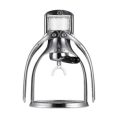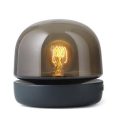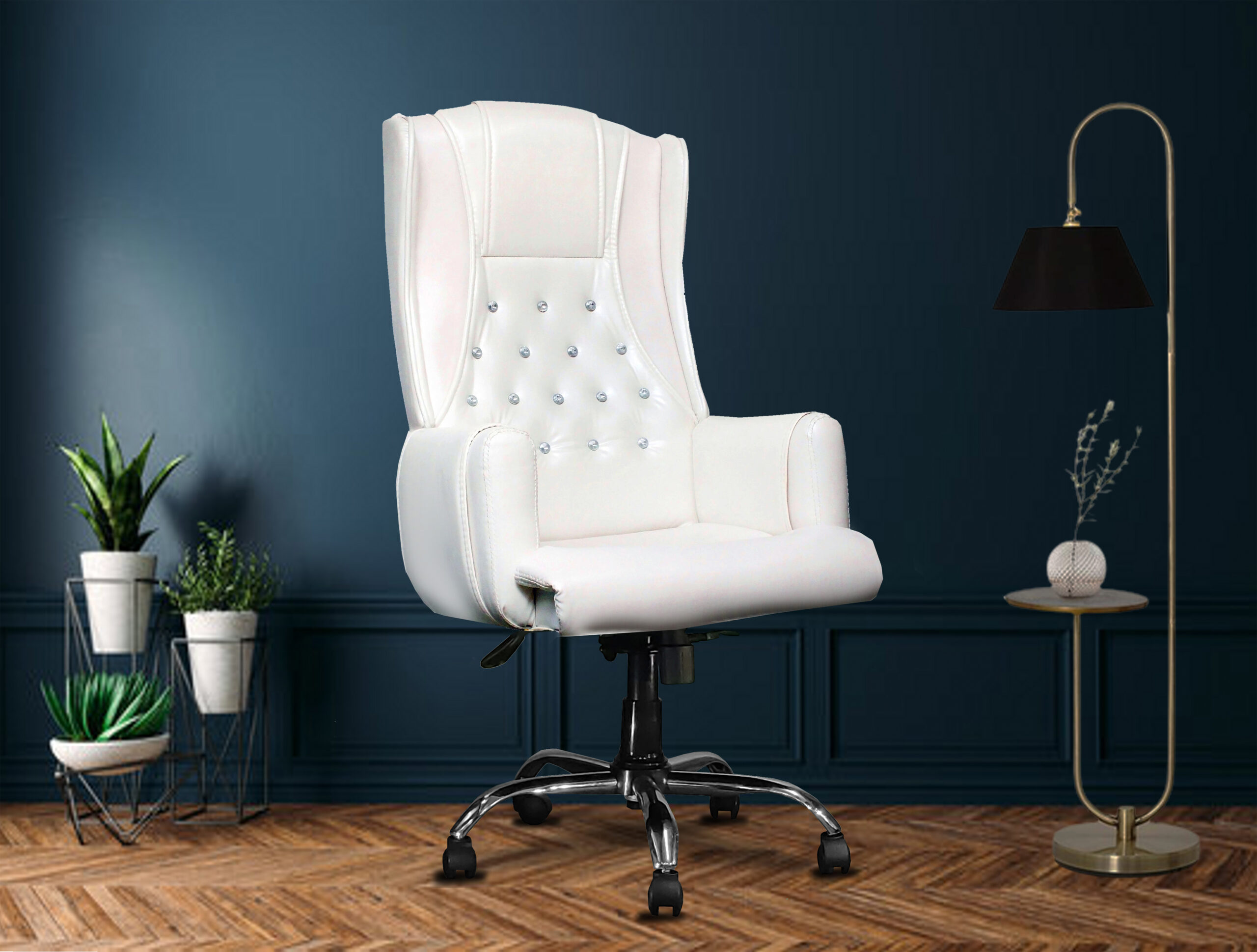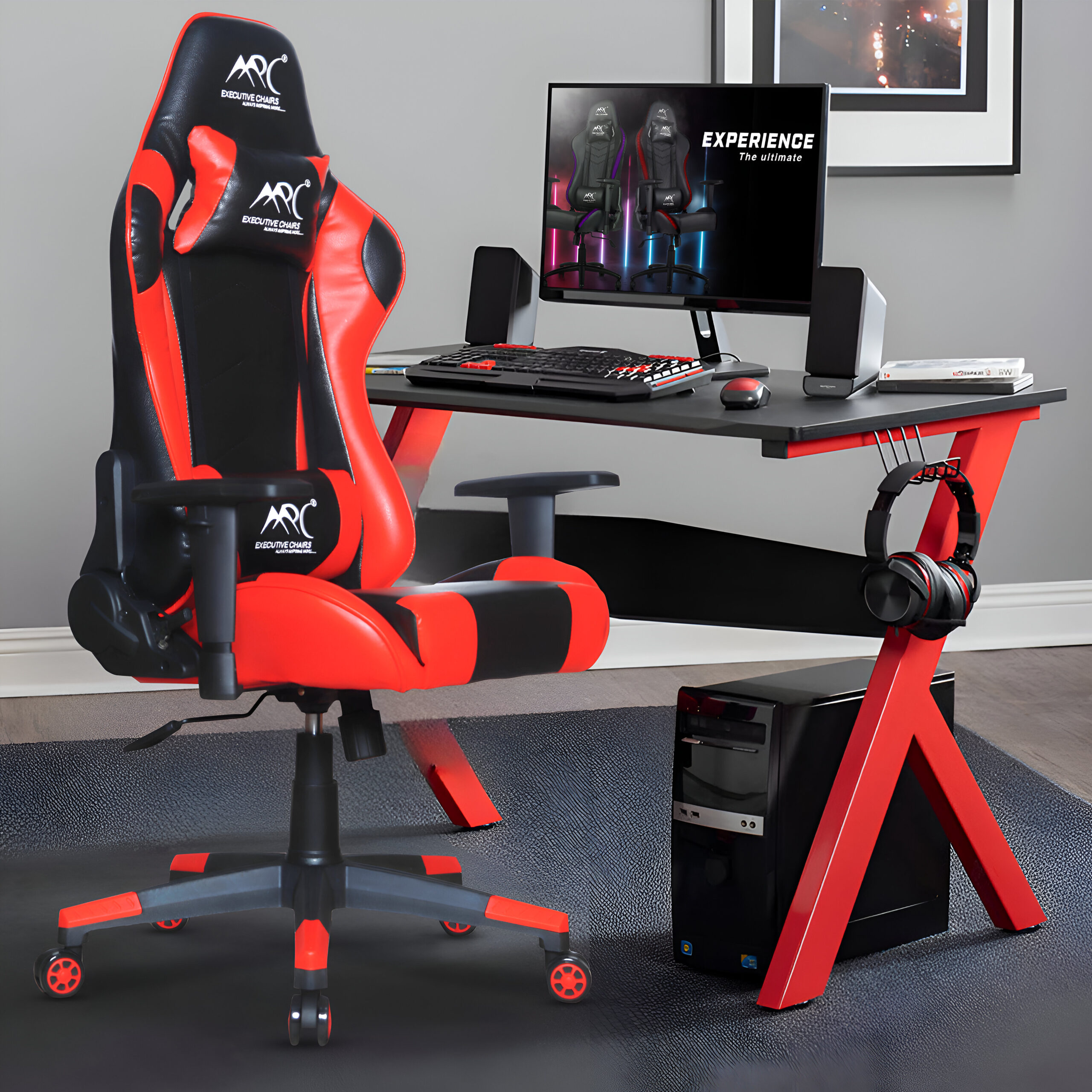Introduction
More professionals than ever before are choosing to work remotely from home in the contemporary digital era, creating working from home more popular than ever. While there are benefits to this change in terms of convenience and ability to adapt, ergonomics at work has been effected. One of the biggest improvements to a working from home is the office chair. Specifically, the ability of ergonomic office chairs to improve overall health, comfort, and support over long periods of sitting has made them more well-liked. A long text explores the benefits of ergonomic seats for work at home in more detail, including the effects on health along with work efficiency and fulfilment.
Understanding Ergonomic Designing
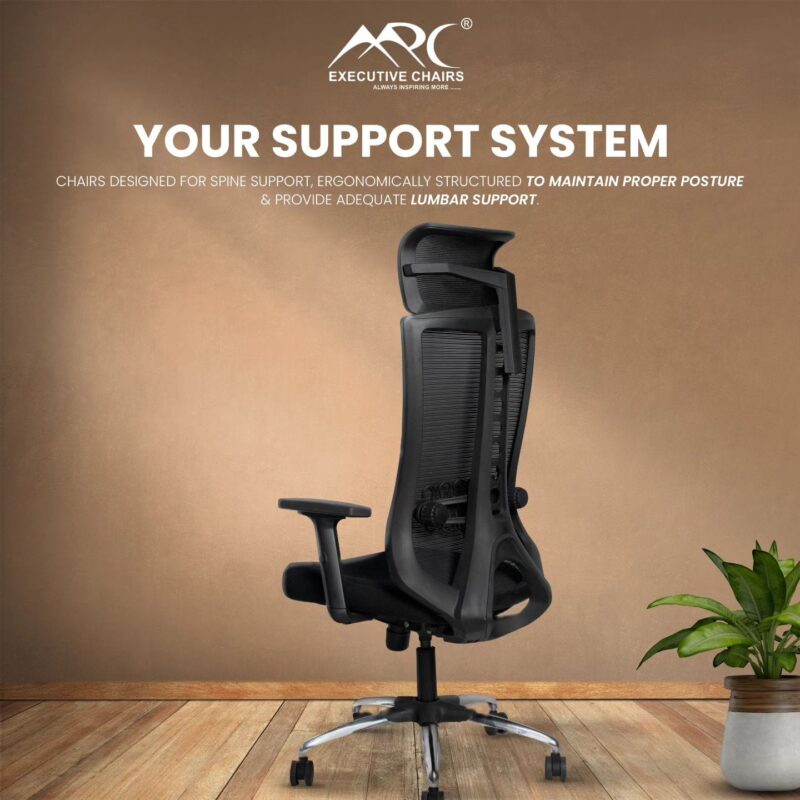
What Makes a Chair Ergonomic?
Ergonomically designed chairs are made to give the best possible support and comfort based on the natural alignment of the human body. Some key features of ergonomic chair include:
Adjustability
All ergonomic chairs have the ability for users to control the chair. These chairs usually come with a number of changes, like lumbar support, arm rest position, back rest tilt, and seat height change, helping the user to customise the chair to better suit their needs and improve posture.
Lumbar support
In a bid to maintain the natural curve of the spine (lumbar lordosis), one needs ergonomic chairs with proper lumbar support. This aids in reducing lower back muscle stress, prevents slumping and keeps spinal alignment healthy.
Seat Depth and Width
Ergonomic chairs usually have adjustable seat widths and depths to accommodate a variety of body types and sizes. A properly sized seat promotes equal weight distribution and provides strong support for the thighs.
Material & Padding
Occasionally, these ergonomic chairs may be built with a lot of padding in addition to materials that serve like a cushioning agent, like mesh, cotton, or leather. Breathability and durability are impacted by material choice, and these must be top elements if you plan to spend a lot of time sitting down.
Benefits of Ergonomic Chairs for Remote Work
Improved Posture
Maintaining good posture can be beneficial for your overall well-being, especially when working long hours at a desk. Ergonomic chairs reduce postural issues including kyphosis, or a rounded upper back, and lordosis, or a swayback, by supporting the proper alignment of the spine.
Improved Comfort
This is so because the foundation of an ergonomic design is comfort. In order to relieve stress observes and improve comfort over extended periods of sitting, the chairs are padded and designed to follow the natural contours of the body.

Lower Musculoskeletal Disorders (MSDs) Risk
Sitting for long periods on non-ergonomic chairs may cause musculoskeletal disorders like lower back pain, neck strain, and shoulder tension. By supporting the spine, neck, and arms effectively, ergonomic chairs mitigate these risks hence minimizing MSDs cases.
Boosted Productivity
The more comfortable you are become, the more productive you will be at work. Ergonomic chairs reduce physical discomforts or tiredness which ensure telecommuters stay attentive and efficient all day long. By stopping processes that are associated to suffering which can be distracting, these chairs promote increased productivity.
Tailored Assistance
The specific ergonomic needs of every person should be determined by their body type, height, posture, and working habits. An ergonomic chair comes with a variety of characteristics, like movable armrests, good lumbar support, and a seat height that can be changed to provide the user with the most comfort when sat.
Long-Term Health Benefits
Purchasing ergonomic chairs is ultimately similar to be creating an investment in everyone involved’s long-term health and well-being. Ergonomic chairs ensure that users are sitting in the proper posture and reduce strain on the musculoskeletal system, which helps prevent chronic health disorders like sciatica and herniated discs that are linked to extended sitting.
Psychological Well-Being
Comfortable and encouraging settings at work improve mental health. Ergonomic chair designs may convince working from home that their company is dedicated to providing a comfortable and healthy work environment, which raises morale and improves productivity.

Versatility
Beyond the usual office workspace, ergonomic seats are useful. Because of their adaptability, it can be utilised for a variety of tasks, like group projects, creative work, and online meetings and video conferences. This allows them to accommodate a broad variety of needs at work and adapt to shifting work demands.
Choosing the Perfect Ergonomic Chair
Factors to Consider
When choosing an ergonomic chair, there are a number of things to take into account:
Adjustability
Select chairs having long changes options to suit varying body shapes and tastes. Armrests, tilting mechanisms, seat height, and lumbar support are crucial customisable elements.
Material and Durability
Choose ergonomic chairs made of high-quality materials, like premium leather, durable fabric, or breathable mesh. Consider the chair’s durability along with the service need to keep it in good shape.
Ergonomic Certifications
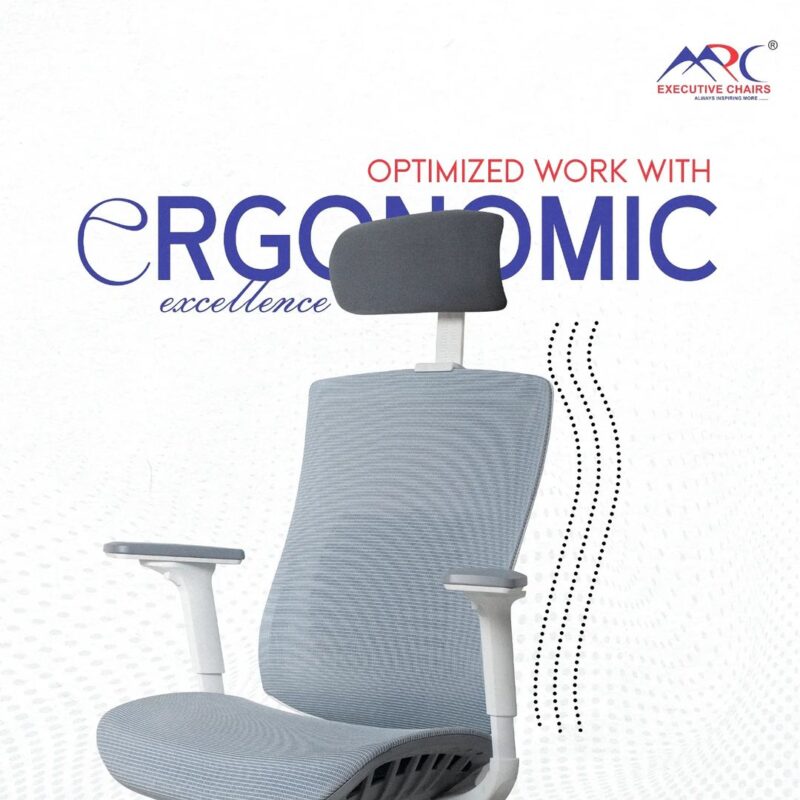
Look for ergonomic certificates from bodies like American National Standards Institute/Business and Institutional Furniture Manufacturers Association (ANSI/BIFMA). This will ensure that the chair meets ergonomic performance criteria.
Comfort and Padding
Verify the comfort level and protect size of the chair. More support is provided by moulded patterns and highly filled cushions if a person sits all the time.
Mobility and Stability
To ensure effortless mobility and stability, go for chairs featuring sturdy bases and smoothly rolling casters. While selecting wheels that are appropriate for either hard or carpeted floors, take note of the type of floor you have at work.
Organising an Ergonomic Workspace
Optimal Desk and Chair Alignment
Maintaining optimal ergonomic alignment between your chair and workstation is crucial to your comfort and productivity:
Chair Height: Set the chair height so that your knees are at a 90-degree angle and your feet are flat on the ground or on a footrest.
Backrest Support: Align the backrest to maintain the spine’s natural curve and making sure that the lumbar support is properly controlled for optimal posture.
Monitor Position: Locate your computer monitor at eye level and about arm’s length away from you so to reduce stress on neck and eyes.
Importance of Armrests
By supporting your arms and shoulders and easing tension, the adjustable appendages provide comfortable typing and mouse use. To keep your elbows close to your body at a comfortable height, change the arm rests.
Tips for Using Your Ergonomic Chair Effectively
Take Regular Breaks
It’s imperative to take regular breaks from prolonged sitting, even if your chair is ergonomic. Every hour, get up, move around and walk about to promote improved blood flow and reduce stiffness.
Practice Proper Sitting Posture
When sitting, make sure that you sit straight with the lower back arched forward slightly; ensure the shoulder position is relaxed, legs reaching down flatly on surface of ground. Avoid slumping or bending forward more closely in order to reduce strain upon backbone and muscles greatly.
INVOLVE MOVEMENT
You should switch between sitting and standing at your desk in order to achieve this. For the purpose of improving blood flow and avoiding muscular exhaustion, you could think about utilising a desk that has adjustable height capabilities or doing some small releases.
A comparison between traditional office chairs and ergonomic chairs
Key Differences
The two types of chairs different greatly in terms of design, comfort, and ergonomic support. These differences include the following:
Support and Comfort
By utilising customisable features, ergonomic chairs prioritise comfort and support, encouraging healthy sitting habits that reduce physical strain on the body. Since normal office chairs usually lack these modifications, their lack of ergonomics over time causes increased pain.

Long-Term Health Benefits
Investing in ergonomic seating improves employees’ overall well-being and has long-term health benefits like reduce the risk of musculoskeletal ailments. Compared to common seats, they encourage posture and spine health, which contribute to a healthier work environment.
Types of Ergonomic Chairs and Remote Work
Freelancers and Creatives
Ergonomic chairs support creative professionals and entrepreneurs all over long hours of focused work. The key to maintaining creativity when working for extended periods of time is the ability to adapt and the peace of mind given.
Corporate Employees
Ergonomic chairs are necessary for distant corporate workers to support their long-term well-being and productivity. These chairs provide a positive work environment by ensuring employee happiness and preventing incidents of absenteeism owing to pain or health problems.
The Role of Ergonomic Chairs in Employee Satisfaction
Impact on Employee Morale
Providing ergonomic chairs to employees shows an employer’s concern for their health and can improve happiness at work and morale. A positive work situation boosts employee engagement and overall health.
Retention and Recruitment
Ergonomic chairs and comfortable work environments can increase employee retention rates and draw top talent looking for a positive work environment. Focusing on ergonomics shows focus to employee well-being and business success.
Cost Considerations and Return on Investment (ROI)
Investment in Health
Ergonomic office chairs are more expensive than regular office chairs, but they are ultimately cost-effective due to their increased productivity and health benefits. Over time, employers can save quite a bit of money because to lower healthcare costs associated with musculoskeletal illnesses and higher employee retention rates.
Improved Employee Productivity
Using ergonomic seats, which lessen pain and encourage healthy work habits, improves productivity. Comfortable working spaces improve concentration, which benefits organisations and leads to successful for business outputs.
Concluding Statement
To sum up, workers who work from home must never forget about investing in ergonomic office chairs to improve their workstation comfort, health, and productivity. Because they protect against musculoskeletal problems, maintain good posture, and improve overall health, these seats foster productive work environments that allow workers to stay active even in working from home settings.



